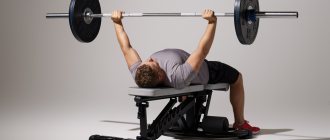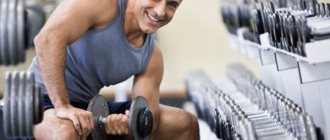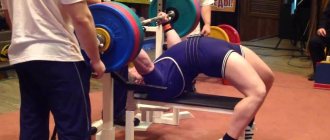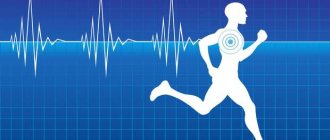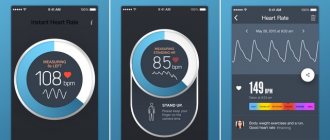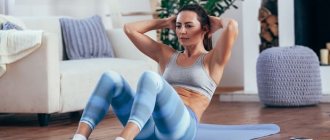When is the best time to train? In the morning or evening? Disputes about this have been going on for years. Some people prefer to exercise after work, while there are people who find it much more pleasant to do physical activity immediately after waking up.
In this article you will learn about what morning training is and what its features are. We will help you finally understand the schedules and decide on the time when it is comfortable to conduct classes.
Morning workout improves your mood
It is common knowledge that fitness helps fight stress . And you don’t have to spend hours “carrying iron” in the gym for this. At the University of Vermont, USA, scientists came to the conclusion that for a good mood we only need 40 minutes of moderate aerobic exercise (with an average heart rate of 112 beats per minute). Moreover, this effect persists for another 12 hours after the lesson. So, after a morning workout, you can radiate positivity almost the whole day.
Morning workout speeds up metabolism
Intense strength and interval training speeds up metabolism by about 4-7%. “This effect lasts for 12 hours after morning workouts. If you visit the gym in the evening, your metabolism will remain accelerated for only a few hours - while you are awake,” says Ekaterina Soboleva, fitness director of the Zupre sports club.
Morning workout helps you lose weight
And although nutritionists do not recommend doing fitness on an empty stomach , it is precisely such morning workouts that burn the most fat. “After a night’s sleep, blood sugar and insulin levels are lower. The reserves of the main fuel - carbohydrates - are also exhausted. Instead, the body uses fat as a source of energy,” explains Ekaterina Soboleva.
This morning training regimen is quite acceptable for cardio and strength training, bodyflex , yoga and stretching.
Rules for morning workouts: how to “wake up” the body?
Features of morning workouts
The sensations from morning workouts are largely dependent on the biorhythms of each person.
They are easier for “larks” than for “night owls”, for whom early rise is difficult. Difficulties, however, may be associated with another nuance. “In the morning, our musculoskeletal system is less mobile and elastic than in the evening, after sleep there is stiffness in the joints and ligaments, metabolism, and blood circulation are lower,” says Alexandra. - In all these circumstances, the risk of injury is higher than during evening training. This means that in the morning you need to spend more time warming up, increasing its duration by three to five minutes. Its goal is to increase body temperature, “accelerate” our cardio-respiratory system, prepare it for work, and warm up the ligaments and joints. Plus, you need to start performing each exercise in the morning workout with warm-up approaches without weight. This applies to exercises for large muscle groups: squats, push-ups, and so on.” If you take care of preparing your body for morning exercise, you can get a lot of benefits from it. “The main advantage of morning workouts is that muscle glycogen stores are depleted in the morning, making fat burning more effective and ensuring more active calorie burning later in the day,” says the expert. In addition, in the morning you can be charged with vigor and good mood: during physical activity, endorphin is produced - the “hormone of happiness”, this has a positive effect on the nervous system.”
In the morning, what kind of workouts you choose matters. The approach and result will be different depending on the direction you are pursuing.
Training directions
- Power training. “For those who train strength, a big plus is that we get up rested, well-slept, and full of strength. This will help with lifting weights; this state of the body is more effective for muscle hypertrophy. In the evening there is not much energy anymore due to fatigue during the day. At the same time, in the morning, as we remember, ligaments and joints are less mobile. Therefore, it is better to schedule high-intensity strength training in the evening.”
- Cardio, functional training. “They burn fat well, trigger and accelerate the process of lipolysis, and generally contribute to improved health - in particular, because they actively saturate the body with oxygen (and this, in turn, helps to wake up and cheer up). Endorphins are produced and nervous tension is relieved. Often in the mornings, time is limited - people come to workout before work, and cardio and FT are best done with minimal breaks and fewer approaches. This is only a plus for us in terms of saving time.”
Class time
“The most optimal time is 1.5-2 hours after getting up. It’s worth giving yourself the opportunity to wake up and tune in. It’s best to start the day smoothly, be sure to drink a glass of water to “dilute” the blood - in the morning it is more viscous, so sudden actions can negatively affect your well-being.”
Do you need breakfast?
“During sleep, glycogen stores are depleted. If we don't have breakfast, we will waste fat reserves during training on an empty stomach. However, in addition to fat, our body can also use protein, that is, muscles, as an energy source, but we need them, because muscle tissue is the main metabolic accelerator.
If you look at the question from the point of view of the functioning of the hormonal system, it is worth remembering that in the morning there are peak levels of the hormone cortisol, which is catabolic. It provides the nervous system with energy in the form of glucose, which it takes from proteins and fats in our body. This is not good for our muscles. Cortisol levels need to be reduced by its antagonist, insulin. It is produced in response to food intake.
Another argument for eating breakfast is that our glucose levels are low when we first wake up. If you don't have breakfast, you won't have enough energy to workout. We will get tired quickly and do fewer exercises or approaches. Hypoglycemia may occur, causing dizziness and nausea, and training will have to be postponed.
An important point is how exactly to have breakfast. Breakfast should be light and consist of ⅓ protein and ⅔ carbohydrates. It is important not to overeat, because this will lead to more drowsiness, blood will be directed to the digestive system to participate in the processing of food, and not to the working muscles. Advice for those who want a light breakfast without a feeling of heaviness in the stomach: keep your food intake liquid - this will allow it to be digested easier and faster.”
Morning exercise reduces appetite
Most of us perceive food as a source of pleasure. In search of joy and dopamine , we consume all the goodies in sight. Morning workouts can help break this chain, experts from Brigham University, USA, were able to prove.
The psychological aspect is also important here. “Knowing how hard you had to work to burn an extra 150-200 calories in the morning, you are unlikely to want to cross out this result with a chocolate bar during the day,” says Elena Darkova.
Morning workout helps you achieve results faster
Firstly, it's all about regularity. Morning training is more difficult to “skip”: we still don’t have excuses to refuse classes (“I’m so tired in the office!”) or temptations (to spend the evening in the company of friends, not exercise equipment).
Secondly, in the morning we generally have more strength than in the evening. “Nervous tension after a day of work will prevent you from working out with full dedication or performing exercises with the correct technique. All this, of course, will not bring you closer to your goal,” comments Elena Darkova.
Morning workouts: a set of exercises
We asked Valentin Zinin to compose and show us a set of exercises for morning classes with an emphasis on weight loss. “This is a fairly intense circuit training, it takes about 20-30 minutes,” says the expert.
How to build a lesson
- Before starting your workout, do a short warm-up to “wake up” your joints and muscles and prepare your body for the stress.
- Build your workout according to the circuit principle: perform all exercises for 40 seconds without resting between them. Rest between circles for 1-3 minutes. Complete 3 circuits per workout.
- Gradually increase the load: reduce the rest time between circles, increase the number of circles or the time of exercise.
- Do this program 4 times a week.
- Finish the session with stretching.
To complete the complex you will need a mat.
Jumping in place
1-jumping in place
Stand up straight with your feet together. Lower your arms along the body, stretch the top of your head up. Jump up and at the same time spread your arms out to the sides. Land on your feet with your knees slightly bent. This is one repetition. Complete a maximum of these in 30-40 seconds .
"Skater"
2-skater
Stand straight, place your feet wider than your shoulders. Bend your left knee, move your pelvis back, and lean your body forward. Bend your right arm and point your elbow towards your left knee. Don't slouch, work the muscles of your thighs, abs and buttocks. Then return to the starting position and do the same, bending your right knee. This is one repetition. Complete a maximum of these in 30-40 seconds .
Lunges with kicks
3-lunges with punches
Stand up straight with your feet together. Bring your hands together at chest level. Step your left foot back, bend your knees, and lower into a lunge. Then shift your body weight to your right foot, lift your left leg and pull your knee towards your chest. Work the muscles of your abs, buttocks, legs and thighs. Don't slouch or arch your lower back. This is one repetition. Perform a maximum of these in 30-40 seconds in each direction.
Dynamic bar
4-dynamic bar
Get down on your knees, place your palms under your shoulders. With your palms and toes on the floor, lift your knees off the floor (take a plank position). Bend your knees, move your pelvis back, then return to the starting position (straight-arm plank). Actively work the muscles of the abs, buttocks, legs and arms. This is one repetition. Complete a maximum of these in 30-40 seconds .
Lying arm and leg raises
5-lifting arms and legs while lying down
Lie on your back, stretch your arms and legs to the sides. As you exhale, twist your body forward, lift your right arm and left leg up. Working your abdominal muscles, touch your left foot with your right hand. Then return to the starting position. Raise your left arm and right leg, connecting your foot and palm in the air. Don't slouch. This is one repetition. Complete a maximum of these in 30-40 seconds .
Reverse press crunch
6-press crunch
Sit on the floor with your legs extended in front of you (knees can be slightly bent). Stretch your arms up. Gently lower your body to the floor, placing your back on the mat. Then smoothly lift your body up, returning to a sitting position. Actively work your abdominal muscles, do not strain your lower back and gently lower your back to the floor, without jerking. This is one repetition. Complete a maximum of these in 30-40 seconds .
Push-ups with trunk rotation
7-push-ups with rotation
Take a lying position from your knees. Place your palms under your shoulders. Bend your elbows and lower your body down. Returning to the top point, turn your body to the left and extend your left arm up. Then return to the starting position, do a push-up, and then twist your body to the right and extend your right arm up. This is one repetition. Complete a maximum of these in 30-40 seconds .
Hyperextension
8-hyperextension
Lie on your stomach with your arms extended in front of you. Raise your arms and legs above the floor (pull your toes away from you). At the top point, squeeze your shoulder blades together and, bending your elbows, move your arms to the sides of your body. Work the muscles of your back, abs, arms and legs. Then return to the starting position and lower your arms and legs to the floor. This is one repetition. Complete a maximum of these in 30-40 seconds .
Morning workout tones muscles during a sedentary lifestyle
Long hours of vigil in front of a monitor at home and in the office spoil our posture, vision and muscle structure. Morning training dilutes the usual passivity and inertia, the muscles will remind you of themselves throughout the day - this will force you to tear yourself away from your favorite chair more often.
If these arguments have convinced you to exercise in the morning, do not forget about the main principles of exercise: a light breakfast, a good warm-up and the right time (at least 15 minutes after waking up).
Popular morning exercises
You can create a suitable set of exercises yourself by choosing the appropriate load level. Some people enjoy doing morning yoga, which does not require serious muscle tension. Others prefer strength training by working with free weights. If you're planning on working out at home, here are a few popular exercises that are perfect for beginners.
Crunches
. It will help you work your abdominal muscles, strengthen your back and buttocks. To perform the exercise, lie on the floor, bend your knees. Place your hands behind your head and begin to lift your upper body. At the same time, stretch your opposite elbow and knee towards each other. Repeat the exercise on different sides 10–15 times. Rise as you exhale, lower as you inhale. Do not make too sudden movements: it is not the speed and amplitude that is important, but the correct execution of the exercise with uniform muscle development.
Squats
. An ideal choice for those who want to pump up the gluteal muscles, strengthen the back of the thigh, and improve posture. Squats can be performed in various ways. The classic version of the exercise looks like this:
- Legs are slightly wider than shoulders, feet parallel to each other.
- The back is straight, the arms are crossed on the chest or placed at the waist.
- When squatting, your knees should be directly above your ankles, forming a right angle.
Another effective exercise is plie, which comes from ballet. To perform it, turn your feet and knees in opposite directions, while keeping them in one line. The legs should stand wide enough, and when lowering, the back maintains ideal posture, the stomach is tucked, and the buttocks are tense. This is an ideal exercise for working the gluteal muscles.
